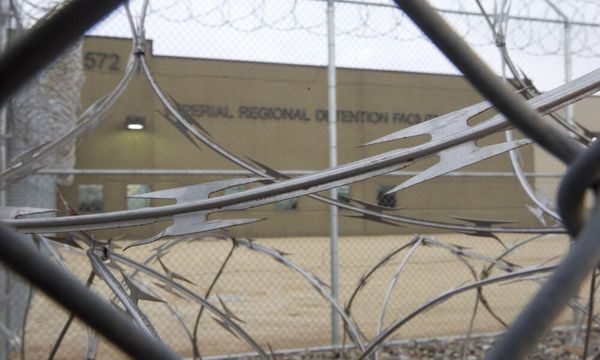Cradling their two-year-old daughter, banker Anjana and techie-husband Ramakrishna savour the breathtaking view of the cityscape from their 14th floor abode in a plush gated community of Hyderabad. The couple, in their mid-40s, consider the nearly ₹2-crore home lucky, for this is where they experienced the profound joy of parenthood for the first time.
“The city looks really beautiful with or without lights from up here. There is no disturbance, no dust or mosquitoes,” says Anjana.
However, amid the serenity, there looms a worry that the couple shares with 300-odd fellow residents: water shortage.
“The borewells dried up. A community circular announced additional monthly maintenance of ₹4,000 per flat for buying water tankers, but even the tankers are delayed,” she says.
Kukatpally, a bustling residential and commercial locality in the north western part of Hyderabad, is considered the gateway to the core western region, the hub of Information Technology and institutes in Gachibowli, Hi-Tech City, Nizampet, Miyapur, Serlingampally, and newer avenues beyond.
As per readings in February 2024 by the State Ground Water Department, Kukatpally topped the State with maximum water level depth of 42.35 metres below ground level.
However, with ground water level depleting from as early as January, tankers replaced borewells as the only source of water for households and multi-storey buildings in the locality. Residents, who did not have to book even a single tanker last year, now book up to six per month.
“There is no ground water and there is no water tanker delivery. What does this mean? There is an acute water crisis in Hyderabad like in Bengaluru,” says Ramakrishna as he echoes the concern of his fellow community dwellers near Kukatpally.
Hyderabad vs Bengaluru
The initial outcry for water did not, however, originate from western Hyderabad.
The sight of women, waiting in the scorching sun with bright plastic pots by water tanker vehicles near Osmania University — the nerve centre of the separate Statehood movement — proved to be one of the most impactful images of the season. The scenes resonated deeply, capturing the attention of social media users, as well as leaders and activists from both the ruling and Opposition parties.
“When did you last book a water tanker? Hyderabad is facing an acute water crisis because of the Congress government’s incompetence,” a user wrote on X (formerly Twitter).
Another posted: “Hyderabad is facing severe water crisis, it is going the Bangalore way.”
Bharat Rashtra Samithi working president K.T. Rama Rao, who served as Minister for Municipal Administration and Urban Development in the State until December 2023, stated at a recent election meeting, “Chief Minister A. Revanth Reddy must focus on water tapping, rather than phone tapping and scams. There are water tankers everywhere now.”
The longstanding rivalry between Hyderabad and Bengaluru spans various aspects, including competition among IT companies, the residential and office market, public transportation, and the cost of living. However, in the face of a fast-approaching Lok Sabha election, striking similarities emerge — the cities are capitals of two States that are both ruled by the Congress party, and are in the grip of acute water scarcity.
A senior executive of the Hyderabad Metropolitan Water Supply & Sewerage Board (HMWS&SB), which functions under the Greater Hyderabad Municipal Corporation (GHMC), suggests that drawing parallels between Bengaluru and Hyderabad with regard to the water shortage is “man-made”, fuelled by vested interests seeking to manipulate public perception.
Nevertheless, the Board acknowledges its unpreparedness in addressing the sudden dry situation in Hyderabad.
“Initially, we could not provide water tanker vehicles as per demand. There was a sudden drying up of borewells in western Hyderabad and there were not as many tankers, drivers, and filling points. But that does not mean the city is in the grip of a water crisis,” Principal Secretary (Municipal Administration & Urban Development) M. Dana Kishore.
The near-viral pictures of women waiting by water tanker vehicles near Osmania University and elsewhere belonged to those living in slums, shanties and settlements, and who lack a registered connection. Such habitations are provided with water tanker vehicles free of cost throughout the year and irrespective of the season, clarifies a senior official in the operations wing of HMWS&SB.
What went wrong?
Hyderabad draws its drinking water supplies, of 2,602.29 million litres per day, from five sources — the city’s twin reservoirs of Osmansagar and Himayatsagar (4.47%), Manjira (18.87%), Krishna phase 1, 2 & 3 (48.20%) from Nagarjunsagar reservoir, and Godavari phase 1 (28.44%).
Due to poor inflows from upstream during monsoon, the reservoirs as of April 8 show a drawing capacity above dead storage — Krishna (2.05 tmcft compared to required 5.60 tmcft) and Godavari (4.07 tmcft compared to required 3.33 tmcft).
According to the Ground Water Department, Telangana received 6% excess rainfall for the water year 2023-24 (up to February 2024) — 79% normal rainfall from southwest monsoon and 14% from northeast monsoon, and others.
While the State’s average groundwater level is 8.70 metres below ground level with a predominant number of wells in the range of 5-10 metres (about 53%), Hyderabad’s average groundwater level is 8.22 metres below ground level. Many wells (about 50%) also fall under the 5-10 metres bracket. Kukatpally (42.35%) is an extreme case, but the maximum depths in the range of about 20 metres below ground level were recorded in core city areas such as in S.R Nagar and Ameerpet, and even on the outskirts, of Shadnagar.
The HMWS&SB’s Hyderabad survey of 1,700 connections, all of which were water tanker vehicle customers, found the major reasons (65%) to be dried up borewells and 15% reduced water yield. Most of the dried-up borewells were in western Hyderabad spanning Manikonda, Gachibowli, Kondapur, Madhapur, Kukatpally, Jubilee Hills and Banjara Hills.
As per the actual trend recorded in these areas, 46% of water tanker purchases were made by independent households and 44% by multi-storey buildings.
The difference is also stark in the vehicle tanker-dependent consumers, like Srinivasa Rao, a techie in Kothaguda, Serlingampally, who had never booked a tanker until last year. But, he got six delivered only in the last month. Comprehensively, the dependency on vehicle tankers as the only source of water grew from 21,020 consumers in March 2023 to 31,726 now.
This is a result of over-extraction of the resource, with the scope for replenishment and ground penetration being poor or absent, observes Dana Kishore, who was the Water Board’s managing director for seven years until December 2023.
He also says that the piezometer recordings by the Ground Water Department may be complicated to understand, as “most of these instruments are installed in wells of government units/ offices where the usage is minimum, but the borewell next door where usage is more may show different results.”
A related survey being conducted by the GHMC on the status of rainwater harvesting structures in Hyderabad shows the preliminary causative results: over 30% of the 11,000 houses surveyed so far lacked an effective rainwater harvesting pit.
Groundwater recharge, experts suggest, has also been a difficult proposition and practice for residents of west Hyderabad — a similarity drawn with Bengaluru — for the rapid concretisation. Bengaluru’s water situation, as per the Centre for Ecological Sciences of the Indian Institute of Science there, is for the reduction of water surface area, as the built-up area shot up from 8% in the year 1973) to 93% last year.
According to global real estate firms, Hyderabad remains a preferred real-estate destination too. JLL Research (Jones Lang LaSalle Inc) underlines that Hyderabad’s residential sales increased three times between 2020 and 2022. As many as 1.84 lakh new housing units were launched between 2014 and 2022, and the institutional investment real estate value in the last 10 years stood at $2.5 billion.
According to Cushman & Wakefield, the first quarter of 2024 saw 11,090 residential unit launches in Hyderabad, and 97% of them were in the western corridor of Hyderabad.
Surviving the summer
About 25 kilometres from the western corridor, officials of HMWS&SB at Gowtham Nagar branch in the Alwal and Malkajgiri division go about their day as usual.
“Water is supplied every alternate day for one hour, and for a little more time in houses in the vertical terrain,” says the local water man.
Manager of HMWS&SB at Gowtham Nagar, T. Naveen explains that water shortage is not felt at any time of supply: “Per connection, the supply is 1.5-2 kilo litres. Up to 20 kilo litres water per month is free for all registered users under the drinking water scheme. That is ensured; no compromises there.”
He also explains the role of rainwater harvesting pits, seizure of motor pumps for illegal water extraction, and penalties for wasting water.
The HMWS&SB, which is not really known for holding regular press conferences and disclosures, has been rather active ever since social media took over the advocacy of Hyderabad’s water situation last month. “This Bengaluru-Hyderabad reference needs to be dispelled first,” says Dana Kishore, stressing on a comparison chart of Hyderabad and Bengaluru’s water supply, population, service area, pipe network, reservoirs, and vehicle tankers.
The strategy, he says, is three-pronged: emergency pumping of waters from reservoirs beyond dead storage capacities, increase in number of tankers from 706 to 1,000 for distribution in the city, and the construction/ maintenance of rainwater harvesting pits.
Dana Kishore assured the Water Board that the government has sanctioned ₹50 crore as summer contingency fund. As part of it, he has instructed 18 NGOs working with the Board to conduct field visits to the houses of 31,726 water tank customers to inspect their rainwater harvesting pits, and initiate an agreement for construction and repair before the onset of monsoon.
In the further west of Hyderabad, in Tellapur, the most happening micro residential market which contributed 50% of the year’s first quarter of unit launches, as per Cushman & Wakefield, new concerns of groundwater extraction have left residents worried.
Last week, Tellapoorians, as they call themselves, posted pictures on social media of 10 kilo litre water tankers lined up for illegal and commercial extraction of water from Osman Nagar of Ramachnadrapuram.
In a letter addressed to the authorities concerned on April 5, the association, a conglomerate of 50 top gated communities, states: “More than 200 heavy water tankers have been plying on Tellapur road every day for the past month. Please note Tellapur lacks a drinking water facility and the HMWS&SB plans are still on paper. With over extraction of groundwater, our living conditions would become horrible.”







